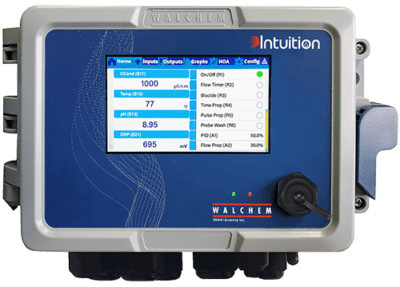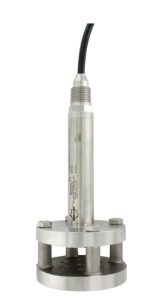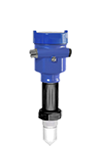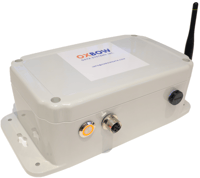Six Ways Upgrading to a Remote Level Sensor Will Improve Your Operations.

As anyone who has stepped away from a running sink can tell you, when it comes to fluid levels, sometimes things can go wrong in a hurry. If no one is there to take a reading, it is hard to respond in a timely manner.
This can pose problems not only on remote, unsupervised worksites with natural or engineered ponds (such as a tailings pond, irrigation pond, or sewage lagoon). It can cause challenges when tanks are hard or inconvenient to access (like storage or buffer tanks).
Fortunately, remote-level sensors can help you stay on top of your fluid volumes with greater ease, confidence, and control. Here are six ways installing remote-level sensors can improve your operations.
1. IMMEDIATE AWARENESS:
Remote-level sensors can transmit signals to a conveniently-located receiver that makes it easier and more convenient to monitor – such as a supervisor’s office or control shack. Not to mention, many monitoring systems can provide real-time readings via an app (see below).
And by equipping a monitor with an alarm system to alert you if levels have fallen out of your operating parameters, you’ll know immediately.
2. ANYWHERE ACCESS:
As we mentioned, many of today’s remote-level sensor systems (such as the Walchem Intuition 6 or 9) can be set up to provide real-time communication and alerts via an app. This allows those responsible to monitor (and even set) levels from across the job site – or around the world – on a desktop or mobile device.
3. IMPROVED SITE SAFETY
Installing remote monitoring sensors can help you better ensure the safety of your employees, your assets and the environment.
Often with fixed-level monitoring systems, employees must climb to get a reading. Remote monitoring allows it to be done from a safe location, reducing the risk.
An overflow can significantly impact the environment and nearby equipment/infrastructure, resulting in a costly and labour-intensive cleanup. Conversely, low levels could delay operations or cause pumps to run dry.
CASE STUDY: BUFFER TANK VALVE CONTROL SYSTEM

Learn how Jadler equipped an oilfield service client in the fracking industry to remotely monitor and control buffer tanks to prevent underfill or overfill. Our integrated solution featured the plug-n-play Walchem Intuition 6 controller.
Read the project profile here.
4. BETTER ALLOCATION OF HUMAN RESOURCES
With remote monitoring sensors in place, you can take “taking readings” off an employee’s to-do list. This is particularly valuable when it comes to remote sites that involve travel time.
If your system is configured to include features such as remote valve control, you can save yourself another step!
5. IMPROVES REAL-TIME DATA COLLECTION
With remote sensors, you receive data in real-time. This allows you to react quicker and more efficiently to alerts – and prevent problems before they impact operations. Real-time data can also be analyzed alongside historical data to gauge performance or measure trends. This can support faster, smarter, data-driven decision-making.
6. IT COULD SAVE YOU A BUNDLE!
Companies are under intense scrutiny when it comes to environmental impacts. A tank or pond containing chemicals or contaminants overflows could result in a costly clean-up. Not to mention, it can impact your reputation and stakeholder relationships.
Low fluid levels can also cause work stoppages. For example, in a fracking operation, if there is not enough available water, work will grind to a halt. Progress will halt as crews sit by idly: costing thousands in lost productivity.
In other cases, low fluid levels could cause a pump to run dry and burn out – resulting in downtime and preventable repair and replacement costs.
THE BENEFITS ADD UP
Upgrading to remote level monitoring technologies has never been easier or more cost-effective. As you can see, it can quickly pay for itself by reducing risk and improving operational efficiencies. Whatever your application, Jadler can help you choose the right components to meet your needs and objectives.
RELATED PRODUCTS







